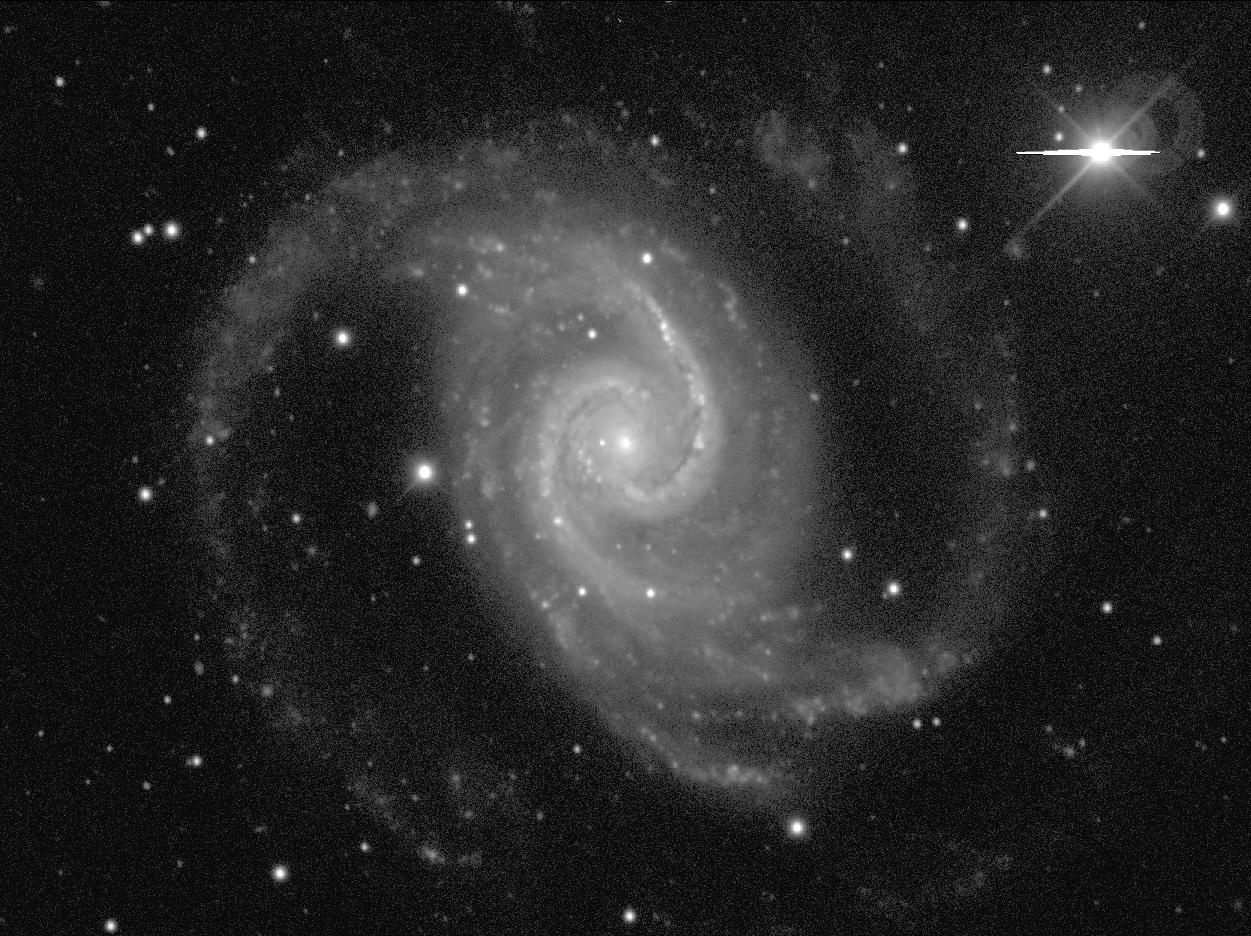

De Vaucouleurs Atlas Type: (R1')SAB(s)bc
Filter: B
Telescope: CTIO 1.5-m
North up , East left
Field Dimensions: 12.1 x 9.0 arcminutes
RC3 Type: SAB(s)bc
RSA Type: Sbc(s)I.2
Surface Brightness Range Displayed: 17.0-26.0 mag per square arcsec
Absolute Blue Magnitude: -20.4
Elmegreen Spiral Arm Class: AC12
De Vaucouleurs Atlas Description:
NGC 1566 has unusually high contrast inner spiral arms. These wind close to the center, but terminate before reaching the nucleus. Hackwell and Schweizer (1983) show that the arms terminate near the ends of a small bar that looks strong in the near-IR but which is barely detectable in blue light. De Vaucouleurs (1963a) may have suspected this bar, which could be the basis of his SAB classification. In the I-band closeup, the bar is oriented horizontally.
Especially interesting is the way the main inner arms are distributed within a broad oval zone bounded by faint arms. Since the galaxy is very nearly face-on, this massive oval is a clear bar-like feature and merits an SAB classification for the galaxy, independent of the near-infrared bar. To add to the interesting morphology of this galaxy, two bright spiral arms break from the ends of the oval and form a fairly well-defined R1' outer pseudoring . There are even weak features reminiscent of ``plumes " (see NGC 1433) just off the leading edges of the broad oval. The brighter plume connects to the south side of the oval, while the north plume is detached and much fainter. The B-I color index map shows that the main arms, the rim of the large oval, and the plumes have enhanced blue colors. The map also shows a complex dust pattern in the inner bar region, including leading offset dust lanes .
With these features, NGC 1566 bears an uncanny resemblance to galaxies like NGC 1433 , except that a strong spiral occupies the primary bar region and replaces the usual leading dust lanes . Even the inner near-IR bar finds an analogue in the secondary bars of normal barred spirals .
NGC 1566 is one of the brightest grand design spirals in the sky, and so has been the subject of numerous detailed studies. For example, the galaxy was analyzed in detail for resonances by Elmegreen and Elmegreen (1990), who used the modal theory of Bertin et al. (1989a,b; see also book Section 5) as a guide. They argue that orbit resonances such as corotation, ILR and OLR , and the inner 4:1 and 6:1 resonances have identifiable impacts on grand design spiral morphology. They conclude that corotation lies near the outer extent of the main star-formation ridges (i.e., the outer ends of the two bright inner arms), and that ILR lies near the point where the inner parts of the bright arms terminate (i.e., near the ends of the near-IR bar). They identify the outer pseudoring as possibly associated with the OLR . The R1' morphology of the outer arms supports the latter suggestion.